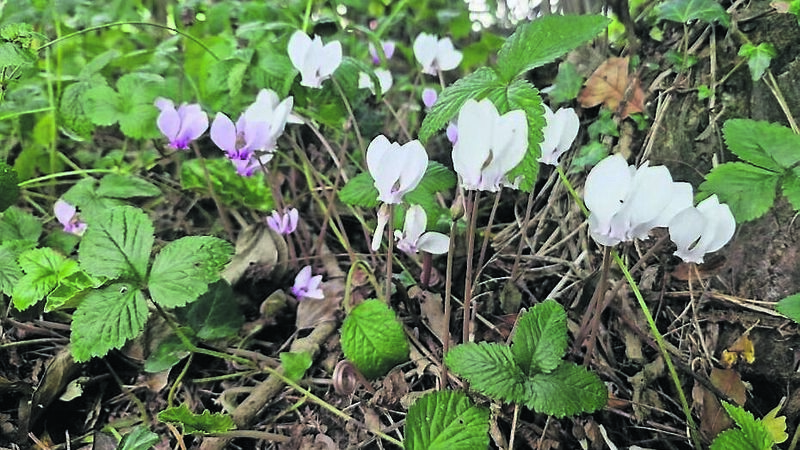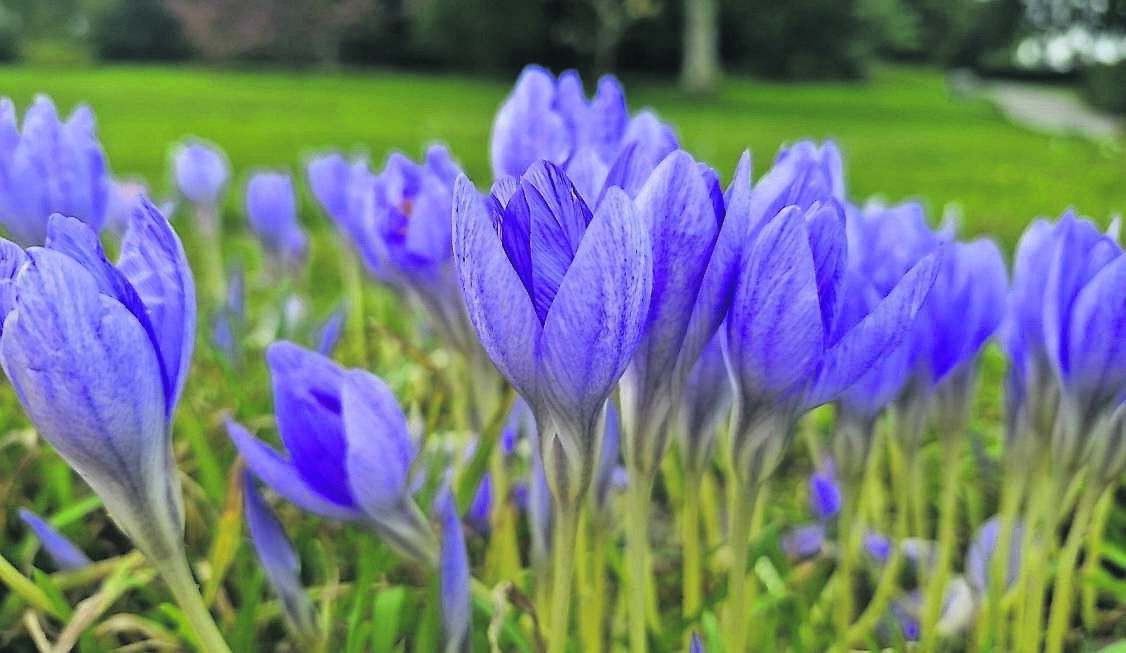A plant that will always light up your garden in autumn

Cyclamen hederifolium is one plant that indicates autumn in the garden
It feels like autumn has crept in very quickly this year.
Every year is different, and one thing is for sure, it is great to notice some definition between the seasons.
The turning of the leaves of the trees, shrubs and herbaceous layer indicate that plants are winding down after a hectic summer of growing, surviving, and thriving to different degrees.
Autumn is a great season in the garden and plants that provide a good display of leaf colour or berries are always a welcome addition. A display of coloured berries can also attract birdlife to the garden as food becomes scarce in the colder months.
Nothing says autumn to me more than the appearance of the delightful Cyclamen hederifolium with their shades of white and pink twinkling in the evening sun. They naturalise freely throughout the garden if allowed to set seed and ants also help to disperse the seed.
Plant one, and watch them spread, particularly under trees and in shaded parts of the garden. A colourful reminder every year of the changing seasons.
As the planning of new projects for autumn and into winter get underway, if cleaning up branches, hedging or other woody material is on the agenda, then maybe the creation of a dead hedge would be useful in part of the garden to create a perimeter or internal enclosure.
It could be used to seclude a seating area, creating privacy, instant screening, and an ideal spot for observing any wildlife that chooses to take up residence in this micro-habitat.

It is a wonderful resource for insects, birds and small mammals, providing shelter over the winter, a food source, valuable dead wood where beneficial fungi and bacteria can thrive, a wildlife corridor, and a really useful spot for adding woody material that can take a long time to break down in the compost heap.
To get started, install a double row of sturdy upright stakes by hammering them into the ground, the closer together these uprights are, the more substantial and impactful the hedge can be from the outset - one to two metres is a good guide.
Thicker branches can be used as the uprights or wooden posts and then branches, brash and woody material is laid horizontally between the upright posts, which can be 30-60cm apart depending upon how deep you want the hedge to be.
These dead hedge features can be very basic in construction, or they can be quite elaborate depending on the materials available, the purpose they are being constructed for, and how creative you want to get as you go.
One of the best attributes of having this feature in the garden is that it can constantly be topped up with woody material, hedge clippings, shrub prunings, branches, and autumn leaves - all great additions and it’s good to have a spot to reuse them for such a worthwhile feature.
A really great addition to any garden, with very basic materials and skill required to build one.
Taking on a new project in the garden does not have to cost the earth, and with a little imagination and a bit of hard graft, the results can be so rewarding on many levels.
Getting out into the fresh air and making the most of the autumn sunshine on the sunnier September days can only do good for the soul and the garden.

It’s also time to consider planting some spring flowering bulbs over the next few weeks and months. Laying the groundwork while the weather is still reasonable will pay off dividends in the spring when we watch colour appear at ground level when we most need something to take us out into the garden.
Planting something new and different each year gives us something to look forward to at the beginning of the growing season, when the days are short and the gardener is looking for signs of life for the growing season ahead.
Hyacinth and paper white daffodils are one of the earliest and the best for scent and colour. If ‘prepared’ bulbs are purchased now and grown on in a cool, dark area to allow for root and shoot development before bringing them into the heat and light for the last 2-3 weeks, they will be in flower for Christmas.
‘Prepared’ bulbs have gone through a period of chilling, which triggers them to start flowering earlier as they believe that winter is coming to an end and it is safe to start growing and flowering.
The range available is at its best right now, so get down to your garden centre for tulips, crocus, hyacinth, daffodils and so much more this in the coming days.
Plant of the Week
There are bulbs appearing now that might, at first glance, make one think it is spring and not autumn.
Amongst them are the autumn flowering crocus, Crocus speciosus.
The flowers appear before the foliage in September, bearing light purple flowers with darker veining through them, and they provide nectar and pollen for later flying insects in autumn and a splash of colour at ground level.
The best thing about these bulbs is that they will reappear without any fuss year after year, the clumps increasing in size when planted in a suitable spot.
They will establish best in full sun or a little shade in a free-draining soil.
Ensure that the foliage is allowed to die back down into the bulb, as with all bulbs they obtain nutrition from the leaves and will flower better the next year as a result.







 App?
App?


